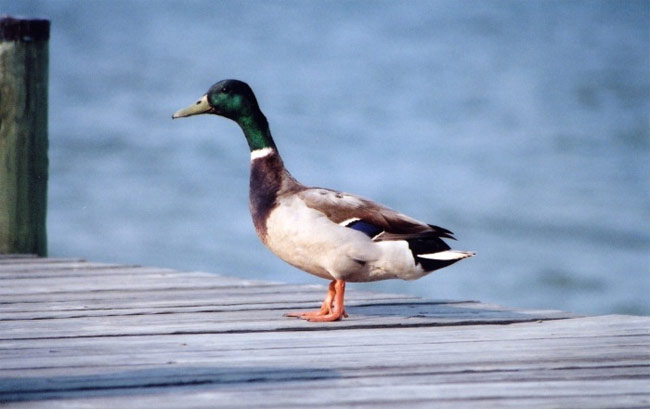Q&A: Discoverer of Dead Gay Duck Sex

Before he won an Ig Nobel Prize in 2003 for his study,"The First Case of Homosexual Necrophilia in the Mallard Anas Platyrhynchos," Dutch biologist Kees Moeliker had never heard of the awards. The prizes, given out each year at a boisterous ceremony attended by real Nobel laureates, honor scientific discoveries that "first make people laugh, and then make them think," according to the Ig Nobel organization.
Now, Moeliker has become something of a specialist on wacky duck doings, in between his work as curator at the Natural History Museum in Rotterdam. He's also a regular at the annual Ig Nobel ceremonies at Harvard University.
Q: So how has winning this prize changed your life?
A: I became part of the organization that gives the Ig Nobel Prizes and publishes the "Annals of Improbable Research."
And I became kind of a specialist in peculiar bird behavior. That's basically because what I won the prize for was about homosexual necrophilia in mallards. This became known that I was interested in behavior like this. So if something happens in the world with birds who do behave in a peculiar way, I get a message.
Q: How often do you get contacted about strange bird behavior?
A: Oh, it can be weekly, it can be once a month. It really depends, but I carefully keep notes about it and now and then I publish little stories about it.
Get the world’s most fascinating discoveries delivered straight to your inbox.
Q: Why are the Ig Nobels important?
A: I think that we have an important role in making science more popular among a large group of people. And we use the humor in science for this. I think we try to show that scientists aren't dull people in lab coats with long beards – you know, the stereotype of the mad scientist. There are people who can have very bright ideas and do great research and are very inspiring.
Q: How do you help choose the Ig Nobel winners each year?
A: We get about 6,000 to 7,000 nominations a year, and we kind of boil it down to about 100. And then we start talking about it and pick 10. We have to read the publications. It has to be published, or it has to be verified through a report.
There's so much interesting improbable research, it's hard not to choose more. But we only give 10 prizes a year, so that's it.
Q: When you conducted your duck research, did you think it would get a lot of attention?
A: No. I saw this behavior in 1995. I published about 2001, so it took me about six years to publish it. It's not so easy to publish this behavior. But I told a lot of people about it in the pub, at the coffee machine, during birthday parties. They said, "Well, you have to publish this," so that's what I did.
At the time I really didn't think I would ever publish this. But I'm happy I did it. It's a tiny piece in the puzzle of the biology of the duck.
Q: Has this changed our understanding of the biology of the duck?
A: I think so, especially for a large audience who think homosexuality, and things like necrophilia, is strictly limited to the human species. But when you tell the story and you say "Well, this is a duck," and people say, "Oh, I didn't know this was happening in nature as well" — I think that's a positive way to look at diversity in sexual behavior.
Q: Over the years, what's the funniest research finding you've come across?
A: Among the winners, one of my favorites is the penguin poo study. It was I think a couple years ago, a biology prize given to biologists and physicists who calculated how much pressure a penguin builds up in its body to poo. And they poo a long way. If you look at the nest of a penguin, all around it you see a white circle of the s**t. And it's because they have lots of pressure in their body to poo outside of the nest so they don't dirty their own nest.
And to calculate this, they didn't touch a penguin — they just used physics and their imagination, so I really like that study. They saw this poo and thought, "This is amazing, I mean, how do they do this?" And so they just started to think, they asked the physicists, they asked biologists and they came up with a good solution.



